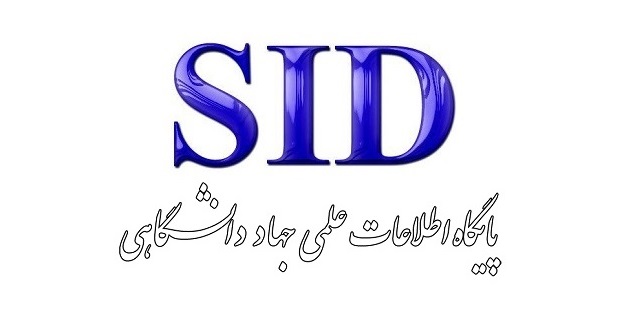Design and Validation of a Financial Distress Risk Assessment Model Based on Interpretive Structural Modeling
Keywords:
Financial distress, Interpretive Structural Modeling (ISM), liquidity riskAbstract
This study examines the hierarchical structure of risks influencing the financial distress of banks using the Interpretive Structural Modeling (ISM) method. Financial distress, regarded as the stage preceding bankruptcy, arises from the complex interaction of internal and external factors affecting banks and has far-reaching implications for financial stability and economic growth. In this regard, key risk components—including liquidity risk, credit risk, market risk, and operational risk—were first identified, and their interrelationships were analyzed using ISM. The research findings revealed that the ratio of net profit to total bank assets and the ratio of net working capital to total bank assets, with impact coefficients of 99% and 94%, respectively, play the most significant roles in reducing the financial distress risk of listed banks. Furthermore, market risk, the market-to-book value ratio, and the total debt-to-total assets ratio, each with an impact coefficient of 91%, showed a similar effect in mitigating this risk. Other variables, such as operational risk, interest rate risk, net profit to equity, and total asset size, also demonstrated approximately 80% influence and ranked in subsequent positions. The power–dependence analysis showed that liquidity risk, with 100% driving power and 17% dependence, is positioned in the independent zone, whereas credit risk and operational risk, characterized by high driving power and medium dependence, are situated in the linkage zone. Variables such as net profit, working capital, and market risk, with 100% dependence but low driving power, are placed in the dependent zone.
References
M. Sydow, "Shock amplification in an interconnected financial system of banks and investment funds based on Financial Stress," Journal of Financial Stability, 2024, doi: 10.1016/j.jfs.2024.101234.
Y. Lian, "Financial distress, bank branching deregulation, and customer-supplier relationships," Journal of Corporate Finance, 2024, doi: 10.1016/j.jcorpfin.2024.102646.
M. Bevilacqua, "Options-based systemic risk, financial distress, and macroeconomic downturns," Journal of Financial Markets, 2023, doi: 10.1016/j.finmar.2023.100834.
B. Barzegar, M. Fallah Shams, M. Khalili Araghi, and H. Nikoumaram, "Investigating the Susceptibility of Financial Distress in Selected Banks Listed on the Tehran Stock Exchange to Macroeconomic Elements Using the KMV Method," Quarterly Journal of Planning and Budgeting, vol. 28, no. 3, 2023, doi: 10.61186/jpbud.28.3.105.
N. Razmgir, Operational Risk in Banks. Arshadan Educational-Authorship Publisher, 2022.
E. Sobhi, T. Mohammadi, and A. Shakeri, "Investigating the Impact of Oil Price on the Probability of Different Financial Distress Risk Regimes: A Markov Regime-Switching Approach," Bi-quarterly Journal of Iranian Economic Issues, vol. 10, no. 1, 2023.
D. Borer, "Identifying systemic risk of assets during international financial crises using Value at Risk elasticities," International Review of Financial Analysis, 2023, doi: 10.1016/j.irfa.2023.102832.
M. Heidari, Key Success Factors in Fire Management Crisis Management by Designing an Interpretive-Structural Model to Determine the Interaction of Its Factors. Azar Barzin Publisher, 2023.
R. Kahkhaei Akbari, A. Khouzin, J. Gorganli Douji, and M. Bokharaeian, "Presenting a Model for Preventing Financial Distress Risk in the Banking Industry," Journal of Islamic Economics and Banking, vol. 12, no. 43, 2023.
M. Hamidian and A. Askari, "The Relationship between Earnings Forecast Accuracy and Bank Financial Distress with an Emphasis on External Bank Governance Mechanisms," Quarterly Journal of Economics, Financial Management, and Accounting Studies, vol. 10, no. 1, 2024.
S. Touhidi, A. H. Mazeini, and H. Heidari, "Cycles of Financial Distress Risk and Its Consequences on Economic Growth in Iran," Quarterly Journal of New Economics and Trade, vol. 18, no. 1, 2023.
E. Zakerinia and Z. Majidi, Credit Risk Management Strategies in the Banking System of the Islamic Republic of Iran. DAFFOS Publisher, 2022.
M. Roshan and S. Khodarahmi, "Measuring Credit Risk and Capital Adequacy Considering the Size and Ownership Structure of Listed Banks in Iran Based on the Generalized Method of Moments (GMM) Panel Model," Management Accounting and Auditing Knowledge, vol. 14, no. 54, pp. 313-329, 2024. [Online]. Available: https://www.jmaak.ir/article_23582.html.
M. Safari and M. Kazemi, "Investigating the effect of fintech on the financial performance of banks considering credit and liquidity risks in Iran's financial markets," 2024.
M. Sharifi and N. Rezaei, "The effect of fintech on the financial efficiency of banks considering the role of credit and economic risks in the Tehran Stock Exchange," 2024.
A. Afshari, S. Ghobadi, and H. Sharifi Renani, "Identifying Effective Factors on the Resilience of Iran's Banking System," Quarterly Journal of Economic Modeling, vol. 17, no. 61, 2023.
O. Soleimani and M. Saffari, "The Relationship Between Knowledge Management and Financial Risk-Taking with Bank Financial Distress," Quarterly Journal of Accounting and Management Outlook, vol. 6, no. 85, 2023.
A. Neill, "Banking on resilience: EU macroprudential policy and systemic risk," ed, 2024.
I. Ernaningsih, "Competition, regulation, and systemic risk in dual banking systems," International Review of Economics & Finance, 2024, doi: 10.1016/j.iref.2024.03.078.
M. Stolbov, "When central bank research meets Google search: A sentiment index of global financial stress," Journal of International Financial Markets, Institutions and Money, 2022, doi: 10.2139/ssrn.3972635.
F. Taheri, M. Setayesh, M. H. Janani, and M. Hematfar, "Presenting an Asset and Liability Management Model for Banks Based on Risk Management Using a System Dynamics Approach," Investment Knowledge, vol. 14, no. 54, pp. 129-159, 2025. [Online]. Available: http://www.jik-ifea.ir/article_23534.html?lang=en.
G. I. Temba, P. S. Kasoga, and C. M. Keregero, "Impact of the quality of credit risk management practices on financial performance of commercial banks in Tanzania," SN Business & Economics, vol. 4, no. 3, p. 38, 2024, doi: 10.1007/s43546-024-00636-3.
A. M. Sadaa, "Corporate governance as antecedents and financial distress as a consequence of credit risk. Evidence from Iraqi banks," Journal of Open Innovation: Technology, Market, and Complexity, 2023, doi: 10.1016/j.joitmc.2023.100051.
G. M. Adhikari, N. Sapkota, D. Parajuli, and G. Bhattarai, "Impact of Green Banking Practices in Enhancing Customer Loyalty: Insights From Banking Sector Customers," Financial Markets Institutions and Risks, vol. 9, no. 1, pp. 195-215, 2025, doi: 10.61093/fmir.9(1).195-215.2025.
H. Teymourian, A. Ja'fari Nadoushan, and N. Neshat, "Investigating the Impact of Financial Risk Level on the Profitability and Resilience of Iranian Banks," Sharif Journal of Industrial Engineering and Management, vol. 39, no. 2, 2023.
M. Rezagholizadeh, Z. M. Elmi, and S. Mohammadi Majd, "The Impact of Financial Distress Risk on the Stock Returns of Industries Listed on the Tehran Stock Exchange," Quarterly Journal of Quantitative Economics, vol. 20, no. 1, 2023.
Downloads
Published
Submitted
Revised
Accepted
Issue
Section
License
Copyright (c) 2025 Hadi Esmaili (Author); Hossein Jabbari; Davood Kianoosh , Hassan Ghodrati , Meysam Arabzadeh (Author)

This work is licensed under a Creative Commons Attribution-NonCommercial 4.0 International License.






